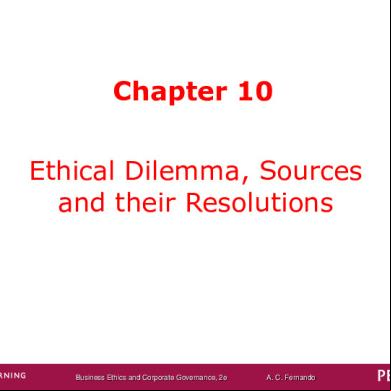Rghj 633g38
This document was ed by and they confirmed that they have the permission to share it. If you are author or own the copyright of this book, please report to us by using this report form. Report 2z6p3t
Overview 5o1f4z
& View Rghj as PDF for free.
More details 6z3438
- Words: 247
- Pages: 17
At equilibrium no driving force for energy or mass transfer . Equilibrium is the static condition in which no change occur in the macroscopic properties of a system with time
p1=x1.p10 Where, p1-partial pressure of component p10-vapour pressure of pure component x1 -mole fraction of component in liquid phase
Ptotal = p1+ p2 Where, Ptotal -Total pressure p1 ,p2 -Partial pressure of component.
x1= p1/ p10 = partial pressure of component /vapour pressure of pure component
Composition in gaseous phase : y 1 = p 1/ P
= partial pressure of component /total pressure Raoult’s law becomes
yiP=xiPisat (i=1,2,3…..n) Where: yi = Vapor-phase mole fraction. xi = Liquid-phase mole fraction. Pi = Vapor pressure of pure species i at the T of the system. yi P = Partial pressure of species i.
yi P = xi γi Pisat ( i= 1,2,…..,N) Where γi = Activity coefficient.
Fugcity coefficient (ɸ) : Fugacity coefficient is defined as the ratio of fugacity of component to its pressure.
ɸ=f/P ɸ- Is the measure of non ideal behavior of the gas.
Activity(a): It is defined as the fugacity of the existing condition to the standard state fugacity
a=f/ fo Activity coefficient : It measure the extent to which real solution depart from ideality. lnγ₁=bx₂² lnγ₂=bx₁²
Wohl’s three suffix equation Margules equation Van laar equation Wilson equation Non random two liquid (NRTL)equation Universal quasi –chemical (UNIQUAC)equation Universal functional activity coefficient (UNIFAC) method
Thank You
At equilibrium no driving force for energy or mass transfer . Equilibrium is the static condition in which no change occur in the macroscopic properties of a system with time
p1=x1.p10 Where, p1-partial pressure of component p10-vapour pressure of pure component x1 -mole fraction of component in liquid phase
Ptotal = p1+ p2 Where, Ptotal -Total pressure p1 ,p2 -Partial pressure of component.
x1= p1/ p10 = partial pressure of component /vapour pressure of pure component
Composition in gaseous phase : y 1 = p 1/ P
= partial pressure of component /total pressure Raoult’s law becomes
yiP=xiPisat (i=1,2,3…..n) Where: yi = Vapor-phase mole fraction. xi = Liquid-phase mole fraction. Pi = Vapor pressure of pure species i at the T of the system. yi P = Partial pressure of species i.
yi P = xi γi Pisat ( i= 1,2,…..,N) Where γi = Activity coefficient.
Fugcity coefficient (ɸ) : Fugacity coefficient is defined as the ratio of fugacity of component to its pressure.
ɸ=f/P ɸ- Is the measure of non ideal behavior of the gas.
Activity(a): It is defined as the fugacity of the existing condition to the standard state fugacity
a=f/ fo Activity coefficient : It measure the extent to which real solution depart from ideality. lnγ₁=bx₂² lnγ₂=bx₁²
Wohl’s three suffix equation Margules equation Van laar equation Wilson equation Non random two liquid (NRTL)equation Universal quasi –chemical (UNIQUAC)equation Universal functional activity coefficient (UNIFAC) method
Thank You





